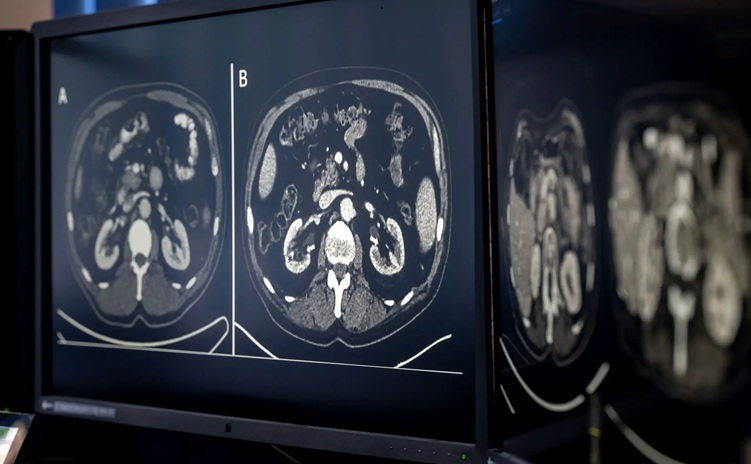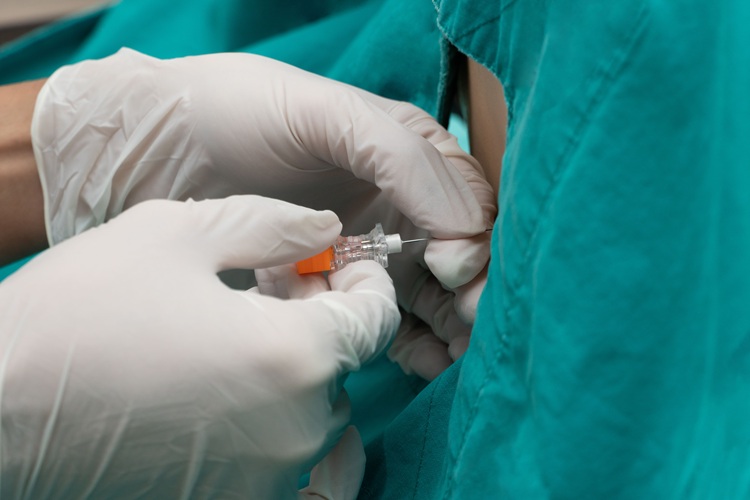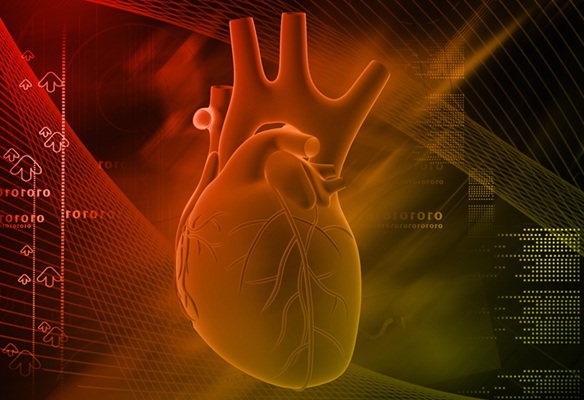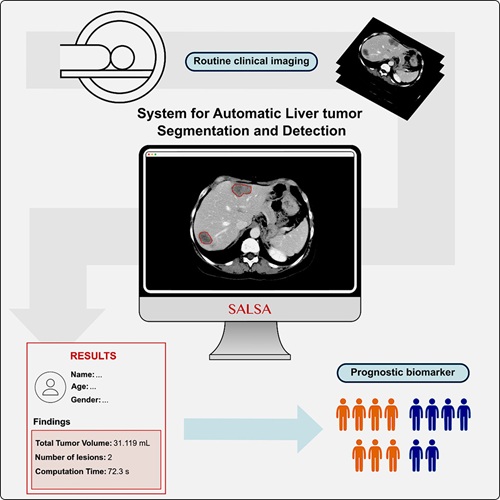New Blood Test Rapidly Detect Radiation Sickness
|
By MedImaging International staff writers Posted on 20 Jul 2020 |
A new blood biomarker testing method has the potential to rapidly identify radiation sickness based on a single drop of blood, according to a new study.
Researchers at Ohio State University (OSU: Columbus, USA) have developed a sensitive microRNA–based blood test for radiation dose reconstruction, with ±0.5 Gy resolution. The test involves microRNA-150-5p, which measures the extent of bone marrow damage, which decreases in response to the radiation dose, and microRNA-23a-3p. Radiation dose–dependent changes in miR-150-5p in blood are internally normalized by miR-23a-3p, which is non-responsive to radiation. By comparing the two microRNAs, the actual radiation dose absorbed can be quantified as a measure of overall exposure risk within hours.
The researchers then tested the biodosimetry assay for estimation of absorbed ionizing radiation dose in mice of varying ages, after exposure to both an improvised nuclear device (IND)–spectrum neutrons and gamma rays. Leukemia specimens from mice exposed to fractionated radiation showed depletion of miR-150-5p in blood; and miR-23a-3p, although not highly expressed in the blood cells, was abundant in circulation and was released primarily from the lungs. The researchers then compared responses after fractionated versus single acute exposure in mice. The study was published on July 15, 2020, in Science Translational Medicine.
“Some patients develop major issues like thrombocytopenia and neutropenia as the result of radiation treatment. We can't look at a patient and determine how much radiation he or she has absorbed - but the impact can be cumulative,” said senior author Naduparambil Jacob, PhD, of the OSU Comprehensive Cancer Center. “As a result, radiation sickness could occur weeks or months after the radiation therapy. With additional research, this new testing method could potentially help oncologists measure, in real time, absorbed radiation and intervene before radiation sickness occurs.”
Radiation sickness, also known as acute radiation syndrome (ARS), is a condition caused by irradiation of major volume or the entire body by a high dose of penetrating radiation in a very short time period. ARS most often impacts the bone marrow and gastrointestinal systems early on, while debilitating effects on pulmonary, cardiovascular, and central nervous systems can be delayed. Death can occur in a matter of days for the most severe cases. Rapid identification of exposure levels is critical, but the diagnostic test--dicentric chromosome assay--requires three to four days to get results.
Related Links:
Ohio State University
Researchers at Ohio State University (OSU: Columbus, USA) have developed a sensitive microRNA–based blood test for radiation dose reconstruction, with ±0.5 Gy resolution. The test involves microRNA-150-5p, which measures the extent of bone marrow damage, which decreases in response to the radiation dose, and microRNA-23a-3p. Radiation dose–dependent changes in miR-150-5p in blood are internally normalized by miR-23a-3p, which is non-responsive to radiation. By comparing the two microRNAs, the actual radiation dose absorbed can be quantified as a measure of overall exposure risk within hours.
The researchers then tested the biodosimetry assay for estimation of absorbed ionizing radiation dose in mice of varying ages, after exposure to both an improvised nuclear device (IND)–spectrum neutrons and gamma rays. Leukemia specimens from mice exposed to fractionated radiation showed depletion of miR-150-5p in blood; and miR-23a-3p, although not highly expressed in the blood cells, was abundant in circulation and was released primarily from the lungs. The researchers then compared responses after fractionated versus single acute exposure in mice. The study was published on July 15, 2020, in Science Translational Medicine.
“Some patients develop major issues like thrombocytopenia and neutropenia as the result of radiation treatment. We can't look at a patient and determine how much radiation he or she has absorbed - but the impact can be cumulative,” said senior author Naduparambil Jacob, PhD, of the OSU Comprehensive Cancer Center. “As a result, radiation sickness could occur weeks or months after the radiation therapy. With additional research, this new testing method could potentially help oncologists measure, in real time, absorbed radiation and intervene before radiation sickness occurs.”
Radiation sickness, also known as acute radiation syndrome (ARS), is a condition caused by irradiation of major volume or the entire body by a high dose of penetrating radiation in a very short time period. ARS most often impacts the bone marrow and gastrointestinal systems early on, while debilitating effects on pulmonary, cardiovascular, and central nervous systems can be delayed. Death can occur in a matter of days for the most severe cases. Rapid identification of exposure levels is critical, but the diagnostic test--dicentric chromosome assay--requires three to four days to get results.
Related Links:
Ohio State University
Latest Radiography News
- Machine Learning Algorithm Identifies Cardiovascular Risk from Routine Bone Density Scans
- AI Improves Early Detection of Interval Breast Cancers
- World's Largest Class Single Crystal Diamond Radiation Detector Opens New Possibilities for Diagnostic Imaging
- AI-Powered Imaging Technique Shows Promise in Evaluating Patients for PCI
- Higher Chest X-Ray Usage Catches Lung Cancer Earlier and Improves Survival
- AI-Powered Mammograms Predict Cardiovascular Risk
- Generative AI Model Significantly Reduces Chest X-Ray Reading Time
- AI-Powered Mammography Screening Boosts Cancer Detection in Single-Reader Settings
- Photon Counting Detectors Promise Fast Color X-Ray Images
- AI Can Flag Mammograms for Supplemental MRI
- 3D CT Imaging from Single X-Ray Projection Reduces Radiation Exposure
- AI Method Accurately Predicts Breast Cancer Risk by Analyzing Multiple Mammograms
- Printable Organic X-Ray Sensors Could Transform Treatment for Cancer Patients
- Highly Sensitive, Foldable Detector to Make X-Rays Safer
- Novel Breast Cancer Screening Technology Could Offer Superior Alternative to Mammogram
- Artificial Intelligence Accurately Predicts Breast Cancer Years Before Diagnosis
Channels
MRI
view channel
New MRI Technique Reveals Hidden Heart Issues
Traditional exercise stress tests conducted within an MRI machine require patients to lie flat, a position that artificially improves heart function by increasing stroke volume due to gravity-driven blood... Read more
Shorter MRI Exam Effectively Detects Cancer in Dense Breasts
Women with extremely dense breasts face a higher risk of missed breast cancer diagnoses, as dense glandular and fibrous tissue can obscure tumors on mammograms. While breast MRI is recommended for supplemental... Read moreUltrasound
view channel
New Incision-Free Technique Halts Growth of Debilitating Brain Lesions
Cerebral cavernous malformations (CCMs), also known as cavernomas, are abnormal clusters of blood vessels that can grow in the brain, spinal cord, or other parts of the body. While most cases remain asymptomatic,... Read more.jpeg)
AI-Powered Lung Ultrasound Outperforms Human Experts in Tuberculosis Diagnosis
Despite global declines in tuberculosis (TB) rates in previous years, the incidence of TB rose by 4.6% from 2020 to 2023. Early screening and rapid diagnosis are essential elements of the World Health... Read moreNuclear Medicine
view channel
New Imaging Approach Could Reduce Need for Biopsies to Monitor Prostate Cancer
Prostate cancer is the second leading cause of cancer-related death among men in the United States. However, the majority of older men diagnosed with prostate cancer have slow-growing, low-risk forms of... Read more
Novel Radiolabeled Antibody Improves Diagnosis and Treatment of Solid Tumors
Interleukin-13 receptor α-2 (IL13Rα2) is a cell surface receptor commonly found in solid tumors such as glioblastoma, melanoma, and breast cancer. It is minimally expressed in normal tissues, making it... Read moreGeneral/Advanced Imaging
view channel
First-Of-Its-Kind Wearable Device Offers Revolutionary Alternative to CT Scans
Currently, patients with conditions such as heart failure, pneumonia, or respiratory distress often require multiple imaging procedures that are intermittent, disruptive, and involve high levels of radiation.... Read more
AI-Based CT Scan Analysis Predicts Early-Stage Kidney Damage Due to Cancer Treatments
Radioligand therapy, a form of targeted nuclear medicine, has recently gained attention for its potential in treating specific types of tumors. However, one of the potential side effects of this therapy... Read moreImaging IT
view channel
New Google Cloud Medical Imaging Suite Makes Imaging Healthcare Data More Accessible
Medical imaging is a critical tool used to diagnose patients, and there are billions of medical images scanned globally each year. Imaging data accounts for about 90% of all healthcare data1 and, until... Read more
Global AI in Medical Diagnostics Market to Be Driven by Demand for Image Recognition in Radiology
The global artificial intelligence (AI) in medical diagnostics market is expanding with early disease detection being one of its key applications and image recognition becoming a compelling consumer proposition... Read moreIndustry News
view channel
GE HealthCare and NVIDIA Collaboration to Reimagine Diagnostic Imaging
GE HealthCare (Chicago, IL, USA) has entered into a collaboration with NVIDIA (Santa Clara, CA, USA), expanding the existing relationship between the two companies to focus on pioneering innovation in... Read more
Patient-Specific 3D-Printed Phantoms Transform CT Imaging
New research has highlighted how anatomically precise, patient-specific 3D-printed phantoms are proving to be scalable, cost-effective, and efficient tools in the development of new CT scan algorithms... Read more
Siemens and Sectra Collaborate on Enhancing Radiology Workflows
Siemens Healthineers (Forchheim, Germany) and Sectra (Linköping, Sweden) have entered into a collaboration aimed at enhancing radiologists' diagnostic capabilities and, in turn, improving patient care... Read more





















